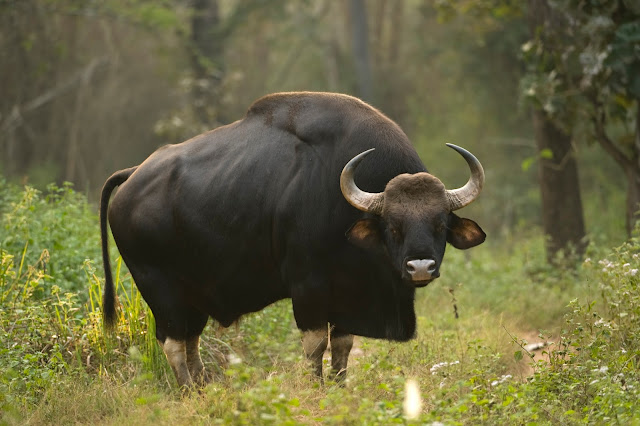The Pokémon character- Dugong
Now we take safari of a marine life of India and start our journey with "The Pokémon character- Dugong"
Introduction
- The Dugong is a medium-sized marine mammal. It is one of four living species of the order Sirenia.
- It is the only living representative of the once-diverse family Dugongidae.
- It's closest modern relative, Steller's sea cow, was hunted to extinction in the 18th century.
- The dugong is the only strictly marine herbivorous mammal.
Physical Characteristics
- The fully-grown adult dugong can grow up to a length of 3 meters.
- The weight of the adult dugong is between 231 and 499 kilograms.
- The dugong has an elongated snout which faces downwards, an enormous, bristly upper lip, used to strip sea grass leaves or snuffle up rhizomes from the sea floor.
- Adult males and some females even have short tusks. Special valves in the nose keep the nostrils closed while underwater.
- The dugong has paddle-like flippers, a fluked tail and large body.
- It is actually more closely related to an elephant.
- Its heavy skeleton helps it stay on the bottom while feeding.
Population in India
- There are just 250 Dugongs in the Indian seas, according to a study by Zoological Survey of India in 2013, spread across Gulf of Mannar, Palk Bay, Gulf of Kutch and Adman and Nicobar Islands,
- Australia has a high dugong population of around 85,000. This is due to the increased protection of the coral reef ecosystem.
Reproduction
- A dugong reaches sexual maturity between the ages of eight and eighteen, older than in most other mammals.
- The age when a female first gives birth is disputed, with some studies placing the age between ten and seventeen years, while others place it as early as six years.
- There is an evidence that male dugongs love fertility at older ages.
- Despite the longevity of the dugong, which may live for 50 years or more, females give birth only a few times during their life, and invest considerable parent care in their young.
- The time between birth is unclear, with estimates ranging from 2.4 to 7 years.
- The mating behaviour varies between population located in different areas. Females give birth after a 13-15 month gestation, usually to just a one calf.
- The calf nurses for 14-18 months, although it begins to eat sea grasses soon after birth. A calf will only leave its mother once it has matured.
Conservation
- Dugong conservation is nothing but coastal conservation being a flagship species in its range.
- In order to conserve and manage the declining populations of dugong in India, a ‘Task Force for Conservation of Dugong in India’ was constituted by the Government of India to formulate the conservation action plan for this species.
- India has the largest population of dugong in the South Asia Sub-region and therefore, it has a significant role to play in the dugong conservation at global level in general and in the South Asia Sub-region in specific.
- India and Sri-Lanka ban the hunting and selling of dugongs and their products.





betmatik
ReplyDeletekralbet
betpark
tipobet
slot siteleri
kibris bahis siteleri
poker siteleri
bonus veren siteler
mobil ödeme bahis
2FNZNM
شركة تنظيف بالخبر
ReplyDeleteشركة تنظيف بالقطيف
شركة تنظيف بالدمام
شركة تنظيف بالجبيل
شركة تنظيف بالاحساء